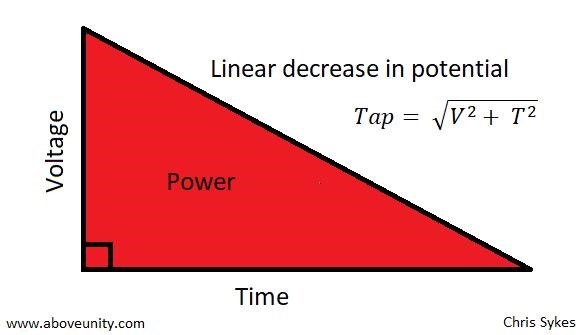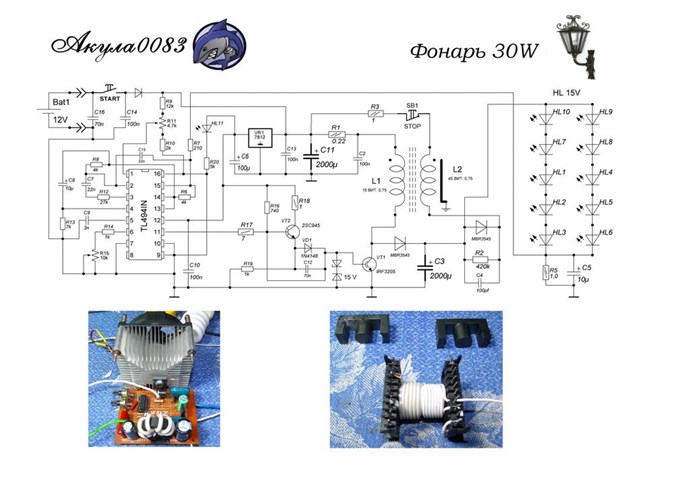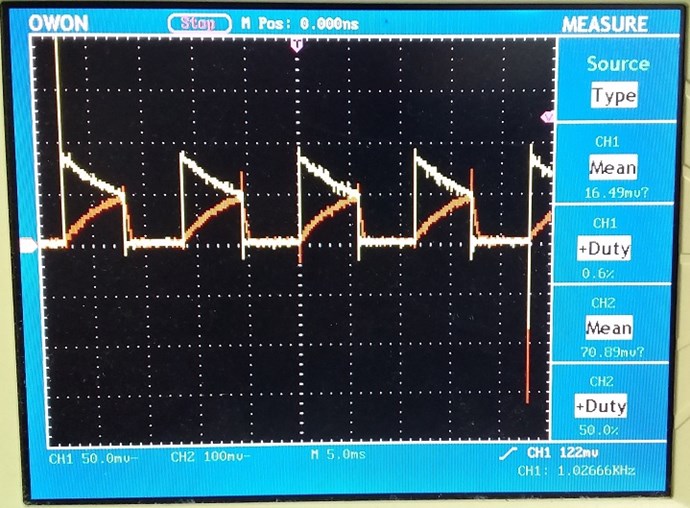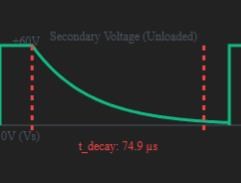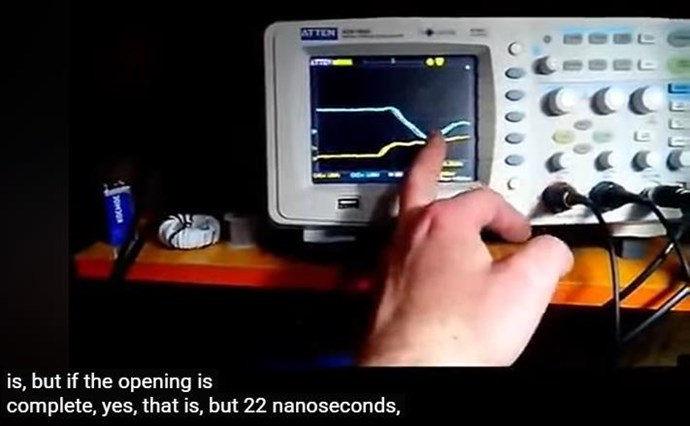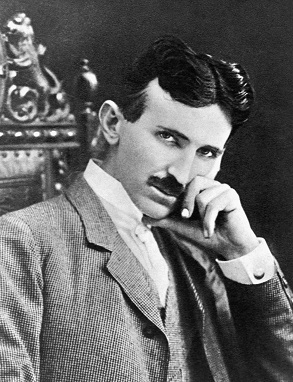My Friends,
We have covered some of this before, but I think we need to focus on this specific topic, because of what's coming next.
This process is evident all throughout nature: Reflected Impedance
Massive weight in Fuel is needed, to burn, to create a Force: f = ma, to accelerate the Rocket to get out of the Atmosphere, where Gravity is the Rockets: Reflected Impedance
Reflected Impedance is one of the terms used where the Input Current Increases, when the Output is Loaded, this is the fundamental force, Work Done. We have all seen this.
The Principle of Reflected Impedance
1. Turns Ratio Definition:
The behavior of an ideal transformer is governed by its turns ratio, $a$, which relates the primary winding turns ($N_p$) to the secondary winding turns ($N_s$): $ a = \frac{N_p}{N_s} $
2. Voltage and Current Relations:
In an ideal transformer, the voltage and current are inversely related by the turns ratio, ensuring power conservation ($P_p \approx P_s$): $ \frac{V_p}{V_s} = a \quad \text{and} \quad \frac{I_s}{I_{p\text{(load)}}} = a $ Where $I_{p\text{(load)}}$ is the component of the primary current that balances the secondary load current $I_s$.
3. Defining Impedances:
The actual load impedance connected to the secondary side ($Z_L$) and the impedance seen looking into the primary terminals ($Z'_p$) are defined by Ohm's law: $ Z_L = \frac{V_s}{I_s} \quad \text{and} \quad Z'_p = \frac{V_p}{I_{p\text{(load)}}} $
4. Deriving the Reflected Impedance ($\mathbf{Z'_p}$):
We can now substitute the voltage and current relations (from step 2) into the definition of $Z'_p$: $ Z'_p = \frac{V_p}{I_{p\text{(load)}}} = \frac{a V_s}{I_s / a} = a^2 \frac{V_s}{I_s} $ Since $Z_L = V_s / I_s$, the reflected impedance is determined by the square of the turns ratio multiplied by the secondary load: $ \mathbf{Z'_p = a^2 Z_L = \left(\frac{N_p}{N_s}\right)^2 Z_L} $ This result is the core of impedance matching—the primary "sees" the secondary load scaled by the square of the turns ratio.
The overall result is that the loading of the secondary coil causes the primary current to increase, and the load's impedance is reflected into the primary circuit, scaled by the square of the turns ratio. This allows engineers to analyze complex systems by converting the entire circuit to a single impedance seen from the source.
Transformer Insights: Will Secondary Load Impact the Primary Current?
This video is relevant because it uses a simulation to explain the impact of changing the secondary load on the primary current of a transformer.
Total Primary MMF vs Secondary MMF
- Secondary Voltage ($V_s$): 60.0
- Secondary Current ($I_s$): 1.20
- Compensating MMF ($\text{MMF}_s$): 120 AT
- Total Primary MMF ($\text{MMF}_p$): 130 AT ($\text{MMF}_m + \text{MMF}_s$)
The graph plots the relationship $\mathbf{MMF}_p = \mathbf{MMF}_m + \mathbf{MMF}_s$, showing the operating point (green dot) moving along this line as the load changes.
Transformer Load Dynamics: Reflected Impedance
The general term is Reflected Impedance ($Z'_{L}$) or Reflected Load. This principle allows the entire secondary circuit (including the load $Z_L$) to be analyzed entirely from the primary side, simplifying overall circuit calculations.
1. The Core Principle: MMF Balance
The operation hinges on the fundamental law of transformer action: the net magnetomotive force (MMF) inside the core must remain nearly constant, primarily determined by the small MMF required to establish the core flux ($\Phi_{\text{net}}$).
When a load is applied to the secondary winding, it creates an opposing magnetic force: the Secondary MMF ($\text{MMF}_s$):
$\text{MMF}_s = N_s I_s$
This opposing force immediately causes the primary side to draw an equivalent current ($\text{MMF}_p$), ensuring the net MMF remains approximately the constant magnetizing MMF ($\text{MMF}_{\text{mag}}$) required for the flux ($\Phi_{\text{net}}$):
$\text{MMF}_{\text{net}} = \text{MMF}_p - \text{MMF}_s \approx \text{MMF}_{\text{mag}}$
For an ideal transformer, the change in primary MMF perfectly cancels the secondary MMF:
$N_p I_{p, \text{add}} = N_s I_s$
This dynamic balancing mechanism ensures that the core flux ($\Phi_{\text{net}}$) remains unchanged, regardless of the load.
2. The Reflected Impedance Equation
Because the currents on the primary and secondary sides are related by the turns ratio ($a$), the load impedance $Z_L$ on the secondary side is effectively "reflected" back to the primary side as $Z'_{L}$.
The relationship is defined by:
$\text{Turns Ratio: } a = \frac{N_p}{N_s}$
The reflected impedance ($Z'_{L}$) is calculated by multiplying the actual secondary load impedance ($Z_L$) by the square of the turns ratio:
$Z'_{L} = a^2 Z_L$
This means that if you step up the voltage ($a > 1$), the load appears much larger (higher impedance) on the primary side, and conversely, if you step down the voltage ($a < 1$), the load appears much smaller (lower impedance) on the primary side.
Reflected Impedance MMF Balance
Observe how the Primary MMF ($\text{MMF}_p$) automatically increases to cancel the opposing Secondary MMF ($\text{MMF}_s$), keeping the Net Flux ($\Phi_{\text{net}}$) nearly constant.
Analogous Principles in Nature and Mechanics
The core concept of Reflected Impedance—where the impedance of a distant load is scaled and felt by the source through an intermediary coupler—is a fundamental principle found across various non-electrical domains, particularly those dealing with power and energy transfer.
1. Mechanical Systems (Gear Ratios)
A mechanical gearbox serves as the most direct and mathematically equivalent analogy to a transformer. It couples a primary system (e.g., a high-speed, low-torque motor) to a secondary system (e.g., a heavy load).
The mechanical equivalent of the Turns Ratio ($\mathbf{a}$) is the Gear Ratio ($\mathbf{G}$), which is the ratio of the number of teeth on the output gear ($T_2$) to the number of teeth on the input gear ($T_1$): $ G = \frac{T_2}{T_1} $
If we define the input system's effective inertia ($Z_{\text{in}}$) and the output load's inertia ($Z_{\text{load}}$), the relationship for the **Reflected Inertia** (analogous to Reflected Impedance) is: $ Z_{\text{in}} = \left(\frac{T_2}{T_1}\right)^2 Z_{\text{load}} = G^2 Z_{\text{load}} $ The motor (primary) "feels" the load scaled by the square of the gear ratio, demonstrating perfect equivalence to the electrical impedance relationship $Z'_p = a^2 Z_L$.
2. Acoustic Systems (Impedance Matching Horns)
Sound transfer efficiency is governed by how well the acoustic impedance of the source matches the medium (air). A megaphone or speaker horn acts as a critical impedance transformer.
- Source (Primary): The small, high-pressure, high-impedance diaphragm of a speaker.
- Medium (Secondary Load): The large volume of low-impedance open air.
- Coupler: The horn, which gradually transitions the impedance.
The horn effectively scales the low impedance of the air, reflecting a higher, better-matched impedance back to the speaker cone. This allows the cone to operate efficiently, maximizing the transfer of vibrational power into the air instead of reflecting it back into the cone structure. The efficiency is related to the ratio of the large horn mouth area ($A_m$) to the small throat area ($A_t$).
3. Hydraulic Systems (Piston Scaling)
In a simple hydraulic press based on Pascal's Law, the force and distance are scaled via piston area ratios, mirroring the voltage and current scaling of a transformer.
- Primary: Small input piston with Area $A_1$ (analogue to $N_s$ turns).
- Secondary: Large output piston with Area $A_2$ (analogue to $N_p$ turns).
The required force at the input ($F_1$) to lift a heavy load ($F_2$) is scaled by the area ratio, $A_{\text{ratio}} = A_2 / A_1$. The mechanical resistance (or impedance) of the heavy load $Z_2$ is reflected back to the input $Z_1$ scaled by the square of this area ratio, ensuring power conservation ($\text{Power}_{\text{in}} \approx \text{Power}_{\text{out}}$).
How Reflected Impedance Maintains Equilibrium
Reflected Impedance acts as a rapid, automated feedback system within the transformer core, ensuring that the primary side always supplies the exact amount of power demanded by the secondary load while keeping the core flux constant.
1. The Constant Core Flux (\(\Phi_{\text{net}}\)) Mandate
In any transformer, the primary voltage (\(V_p\)) induces an electromotive force (EMF) in the primary winding, and this EMF is directly proportional to the rate of change of the net magnetic flux (\(\Phi_{\text{net}}\)) in the core, based on Faraday’s Law of Induction.
\[ \text{EMF} \propto \frac{d\Phi_{\text{net}}}{dt} \]
Because the primary winding is connected to a relatively fixed AC voltage source (like the power grid), the primary EMF must also be nearly constant. Therefore, the net core flux (\(\Phi_{\text{net}}\)) must remain virtually constant regardless of whether the secondary side is loaded or unloaded. This constancy is the state of equilibrium the transformer is constantly fighting to maintain.
2. The Dynamic Response to Load
When a load is connected to the secondary side, this equilibrium is temporarily disrupted, triggering an immediate, self-correcting sequence:
- The Disturbance (MMF Secondary): The secondary current (\(I_s\)) flows, generating a Secondary MMF (\(\text{MMF}_s\)) that opposes the original core flux, pushing the system out of equilibrium.
- The Restoration (MMF Primary): The momentary drop in core flux is sensed instantly by the primary winding (via a reduction in the primary EMF). To maintain the required primary EMF, the primary winding must draw a compensating current, \(I_{p, \text{add}}\). This current creates an additional Primary MMF (\(\text{MMF}_{\text{add}}\)) that is perfectly equal and opposite to \(\text{MMF}_s\).
This process is governed by the MMF balance equation:
\[ \text{MMF}_{\text{net}} = \text{MMF}_{\text{mag}} + \text{MMF}_{\text{add}} - \text{MMF}_s \] \[ \text{MMF}_{\text{net}} \approx \text{MMF}_{\text{mag}} \quad \text{because} \quad \text{MMF}_{\text{add}} = \text{MMF}_s \]
3. Equilibrium in Power and Impedance
The net result of this MMF balancing is that the transformer remains in power equilibrium:
- The input power on the primary side instantly adjusts to match the output power demanded by the load on the secondary side (plus internal losses).
Furthermore, the relationship \(Z'_{L} = a^2 Z_L\) (Reflected Impedance) is the mathematical manifestation of this physical balancing act.
- By reflecting the secondary load \(Z_L\) to an equivalent impedance \(Z'_{L}\) on the primary side, the primary source effectively "sees" the load directly, allowing it to supply the required current and power without the core flux having to change.
In essence, Reflected Impedance is the elegant way the transformer communicates the power demand from the secondary back to the primary source, ensuring that the core's magnetic state (flux) remains stable, and power input equals power output, thus maintaining the overall system equilibrium.
My Friends, in an effort to make this post as useful as possible, it may have become somewhat over complicated.
Short version of this post: There is 'normally' an opposite force to oppose any force we apply. For example, in a Conventional Electric Transformer always has opposition, a Force that makes us put more force in, to over come the opposing force.
If you can remove the "Reflected Impedance" on your Input, then you have machine that can go way Above Unity! This is what we have done!
Floyd Sweet gave us this image:

Why would Floyd Sweet take the time to provide us an image like this? WHY? What does it represent?
I have shared images like:
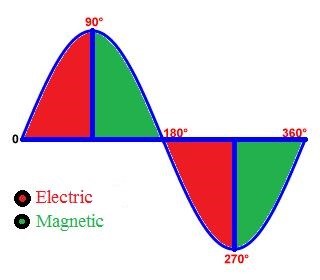
And:
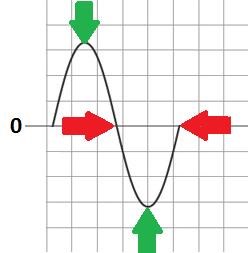
These images show a peak, where the Force of MMF is at Peak or at Zero.
Circumventing the Force of: Reflected Impedance, to Pump Current, the Answer is in this Image:
Ref: Parallel Wire or Bifilar Coil Experiment
We all know, we can get the Voltage up, and it costs us almost nothing, and then we can trigger a pumping of Current once we have the Voltage up.
Please ponder the Question: "Why did I mark this image Important" in my thread: Chris's Non-Inductive Coil Experiment
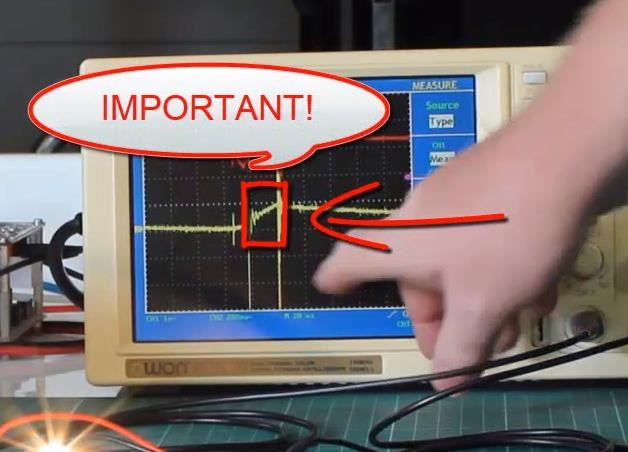
In my last video, we saw Evidence:
That video contained a ton of information, but it did miss one crucial part, the video showed: Reflected Impedance, but it did not show how to avoid this fundamental Force.
There are only Two methods I know of to Circumvent this Force: Reflected Impedance
Best Wishes,
Chris


